Japan Orders Nuclear Plant Operators to Obtain More Emergency Generators
Radiation readings spiked sharply in one reactor at the stricken Fukushima Daiichi nuclear plant after a powerful aftershock late Thursday, according to data released by the government, a development that might indicate new damage to the already compromised reactor.
But the plant owner, the Tokyo Electric Power Company, said the gauge used to measure radiation was most likely broken.
The high radiation was measured in the drywell of Reactor No. 1, directly below the reactor pressure vessel and part of the primary containment that is a crucial barrier preventing the escape of radioactive materials. The drywell reading raised the worrisome possibility that highly radioactive water had escaped, and perhaps even material from the nuclear core, although this was far less likely.
New Video Shows Disaster at Fukushima Nuclear Plant; Japan Tightens Regulations Excerpts:
Newly released video of Japan's March 11 earthquake and tsunami is giving the world a better look at its devastating impact on the Fukushima Daiichi nuclear plant.
The brief clip put out by the Tokyo Electric Power Company Saturday shows a wall of water slamming into the plant, easily overwhelming the facility's protective seawall.
The release of the video clip comes the same day Japanese officials announced they were requiring the country's nuclear facilities to take additional precautions.
Heartening. These additional precautions are the game changer we've been waiting for! Wait.. No..
Yeah.. Where are the robots? Robots absent from Japan’s radiation battle
In the battle to contain radiation spewing from Fukushima Daiichi nuclear station, Japanese authorities have deployed helicopters, riot-police water cannon and a 58-metre steel hose-arm normally used to spray concrete into high-rise construction sites.
Yet one sort of equipment has been notably absent from the effort: robots.
The four-week-old nuclear crisis would seem like a perfect showcase for Japan’s advanced robotics industry. Human technicians at Fukushima are suffering from injuries and exhaustion, and have been prevented from carrying out critical repair work by dangerous levels of radiation. What, then, would be more welcome than a fleet of remote-controlled mechanical drones?
Yet in reality, robots capable of responding to nuclear accidents are thin on the ground in Japan – a reflection, experts say, of both the limits of current robotics technology and of power-plant operators’ reluctance to invest in improving it.
Japan’s own small compliment of nuclear-response robots – two remote-operated devices that can take video and measure radiation – have been sent to the site but have not been used..
Getting rid of Japan's stricken nuclear plant will take decades, vast sums of money
Once Japan's leaky nuclear complex stops spewing radiation and its reactors cool down, making the site safe and removing the ruined equipment is going to be a messy ordeal that could take decades and cost hundreds of millions of dollars.
Radiation has covered the area around the Fukushima Dai-ichi plant and blanketed parts of the complex, making the job of "decommissioning" the plant — rendering it safe so it doesn't threaten public health and the environment — a bigger task than usual. (Understatement, much?)
..
That timeline is far faster than those for other nuclear accidents and contains a big caveat: The reactors must first be stabilized and cooled, goals that have eluded emergency teams struggling with cascading problems in the month since the devastating tsunami damaged their cooling systems. Omori said the extent of damage to the reactors and other problems still need to be assessed.
..
Though an avid user of nuclear power with 54 plants, Japan has little experience in decommissioning and none involving problematic reactors. The first, the Tokai Power Station's No. 1 reactor, is 13 years into a 22-year process. Its fuel rods have been removed, and its turbines and other equipment are being dismantled while the reactor is isolated, its vents and ducts closed.
And: Why Fukushima will ultimately be much worse than Three Mile Island and Chernobyl combined..
Unlike Three Mile Island and Chernobyl, where problems were confined to one reactor each, Fukushima has three active reactors that are not cooling properly and at least one of which may be leaking, and four storage pools for spent fuel which have overheated, some to dangerous levels.
Nuclear Regulatory Commission: Watchdog or Lapdog?
Internal government watchdogs and outside experts alike say the U.S. Nuclear Regulatory Commission is too lenient on the industry it is charged with regulating, often making decisions based on the industry's profit margins rather than public safety.
The charges are similar to complaints leveled against the Mine Health Safety Administration and the Minerals Management Service over the past year, after high-profile tragedies -- the Upper Big Branch Mine collapse and the Deepwater Horizon spill -- in the industries they are responsible for regulating.
In the wake of the events in Japan, there is a heightened sense of concern throughout the United States that a similar meltdown could occur, particularly in New England where reactors similar to those in Japan remain in operation.
It's not so much a Public Relations disaster as it is death pangs from a huge segment of Japan's export portion of their economy. The neighbors are nervous and will find the necessary excuses to block much more Japanese food in the very near future..
Powerful Aftershock Rocks Japan New problems at a new nuclear power plant. Excerpts:
Measuring 7.1 (one or more other reports said 7.4), rocked northeast Japan, causing more damage and disruption to a devastated area. It cut electricity to four million homes, disrupted power at two nuclear facilities, and according to Kyodo News:
"Radioactive water spilled from pools holding spent nuclear fuel rods at the Onagawa power plant in Miyagi Prefecture," according to Japan's Nuclear and Industrial Safety Agency (NISA).
For up to 80 minutes, power was lost at Onagawa and the Higashidori nuclear facility. "A small amount of contaminated water spilled on the floor (inside) all three (Onagawa) reactors....In all, water spilled or leaked at eight sections of the plant," also run by Tokyo Electric (TEPCO). In addition, blowout panels designed to control pressure were damaged in reactor number three's turbine building, TEPCO saying a complete damage assessment was ongoing.
And:
As always, they say damage, new or earlier, poses no dangers. Already, in fact, Fukushima caused potentially apocalyptic ones, covered up to conceal their gravity, extending far beyond Japan and the Pacific rim.
..
His main conclusion was that "the full accident hazard of each type nuclear power reactor has not been scientifically established, even for the most likely of serious accidents.
"Specifically, "the theory underlying the industry's safety calculations has not been experimentally verified, nor are the necessary experiments planned....This shortcoming is one of the two chief concerns of this book."
"The other, and more important, concern is that there are accident possibilities not considered for licensing which are more severe than the design basis accidents and that these have not even been theoretically investigated for the course they each could take...."
In other words, reactor containment systems aren't designed for the worst potential accidents. As a result, each operating reactor anywhere "appears to have an enormous potential for public disaster."
Radiation readings spiked sharply in one reactor at the stricken Fukushima Daiichi nuclear plant after a powerful aftershock late Thursday, according to data released by the government, a development that might indicate new damage to the already compromised reactor.
But the plant owner, the Tokyo Electric Power Company, said the gauge used to measure radiation was most likely broken.
The high radiation was measured in the drywell of Reactor No. 1, directly below the reactor pressure vessel and part of the primary containment that is a crucial barrier preventing the escape of radioactive materials. The drywell reading raised the worrisome possibility that highly radioactive water had escaped, and perhaps even material from the nuclear core, although this was far less likely.
New Video Shows Disaster at Fukushima Nuclear Plant; Japan Tightens Regulations Excerpts:
Newly released video of Japan's March 11 earthquake and tsunami is giving the world a better look at its devastating impact on the Fukushima Daiichi nuclear plant.
The brief clip put out by the Tokyo Electric Power Company Saturday shows a wall of water slamming into the plant, easily overwhelming the facility's protective seawall.
The release of the video clip comes the same day Japanese officials announced they were requiring the country's nuclear facilities to take additional precautions.
Heartening. These additional precautions are the game changer we've been waiting for! Wait.. No..
Yeah.. Where are the robots? Robots absent from Japan’s radiation battle
In the battle to contain radiation spewing from Fukushima Daiichi nuclear station, Japanese authorities have deployed helicopters, riot-police water cannon and a 58-metre steel hose-arm normally used to spray concrete into high-rise construction sites.
Yet one sort of equipment has been notably absent from the effort: robots.
The four-week-old nuclear crisis would seem like a perfect showcase for Japan’s advanced robotics industry. Human technicians at Fukushima are suffering from injuries and exhaustion, and have been prevented from carrying out critical repair work by dangerous levels of radiation. What, then, would be more welcome than a fleet of remote-controlled mechanical drones?
Yet in reality, robots capable of responding to nuclear accidents are thin on the ground in Japan – a reflection, experts say, of both the limits of current robotics technology and of power-plant operators’ reluctance to invest in improving it.
Japan’s own small compliment of nuclear-response robots – two remote-operated devices that can take video and measure radiation – have been sent to the site but have not been used..
Getting rid of Japan's stricken nuclear plant will take decades, vast sums of money
Once Japan's leaky nuclear complex stops spewing radiation and its reactors cool down, making the site safe and removing the ruined equipment is going to be a messy ordeal that could take decades and cost hundreds of millions of dollars.
Radiation has covered the area around the Fukushima Dai-ichi plant and blanketed parts of the complex, making the job of "decommissioning" the plant — rendering it safe so it doesn't threaten public health and the environment — a bigger task than usual. (Understatement, much?)
..
That timeline is far faster than those for other nuclear accidents and contains a big caveat: The reactors must first be stabilized and cooled, goals that have eluded emergency teams struggling with cascading problems in the month since the devastating tsunami damaged their cooling systems. Omori said the extent of damage to the reactors and other problems still need to be assessed.
..
Though an avid user of nuclear power with 54 plants, Japan has little experience in decommissioning and none involving problematic reactors. The first, the Tokai Power Station's No. 1 reactor, is 13 years into a 22-year process. Its fuel rods have been removed, and its turbines and other equipment are being dismantled while the reactor is isolated, its vents and ducts closed.
And: Why Fukushima will ultimately be much worse than Three Mile Island and Chernobyl combined..
Unlike Three Mile Island and Chernobyl, where problems were confined to one reactor each, Fukushima has three active reactors that are not cooling properly and at least one of which may be leaking, and four storage pools for spent fuel which have overheated, some to dangerous levels.
Nuclear Regulatory Commission: Watchdog or Lapdog?
Internal government watchdogs and outside experts alike say the U.S. Nuclear Regulatory Commission is too lenient on the industry it is charged with regulating, often making decisions based on the industry's profit margins rather than public safety.
The charges are similar to complaints leveled against the Mine Health Safety Administration and the Minerals Management Service over the past year, after high-profile tragedies -- the Upper Big Branch Mine collapse and the Deepwater Horizon spill -- in the industries they are responsible for regulating.
In the wake of the events in Japan, there is a heightened sense of concern throughout the United States that a similar meltdown could occur, particularly in New England where reactors similar to those in Japan remain in operation.
It's not so much a Public Relations disaster as it is death pangs from a huge segment of Japan's export portion of their economy. The neighbors are nervous and will find the necessary excuses to block much more Japanese food in the very near future..
Powerful Aftershock Rocks Japan New problems at a new nuclear power plant. Excerpts:
Measuring 7.1 (one or more other reports said 7.4), rocked northeast Japan, causing more damage and disruption to a devastated area. It cut electricity to four million homes, disrupted power at two nuclear facilities, and according to Kyodo News:
"Radioactive water spilled from pools holding spent nuclear fuel rods at the Onagawa power plant in Miyagi Prefecture," according to Japan's Nuclear and Industrial Safety Agency (NISA).
For up to 80 minutes, power was lost at Onagawa and the Higashidori nuclear facility. "A small amount of contaminated water spilled on the floor (inside) all three (Onagawa) reactors....In all, water spilled or leaked at eight sections of the plant," also run by Tokyo Electric (TEPCO). In addition, blowout panels designed to control pressure were damaged in reactor number three's turbine building, TEPCO saying a complete damage assessment was ongoing.
And:
As always, they say damage, new or earlier, poses no dangers. Already, in fact, Fukushima caused potentially apocalyptic ones, covered up to conceal their gravity, extending far beyond Japan and the Pacific rim.
..
His main conclusion was that "the full accident hazard of each type nuclear power reactor has not been scientifically established, even for the most likely of serious accidents.
"Specifically, "the theory underlying the industry's safety calculations has not been experimentally verified, nor are the necessary experiments planned....This shortcoming is one of the two chief concerns of this book."
"The other, and more important, concern is that there are accident possibilities not considered for licensing which are more severe than the design basis accidents and that these have not even been theoretically investigated for the course they each could take...."
In other words, reactor containment systems aren't designed for the worst potential accidents. As a result, each operating reactor anywhere "appears to have an enormous potential for public disaster."










































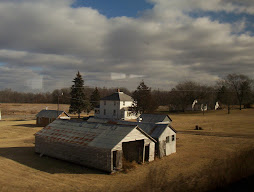


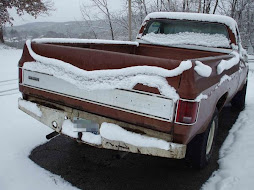

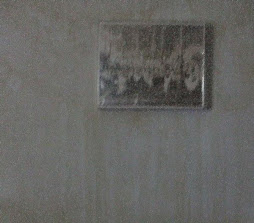





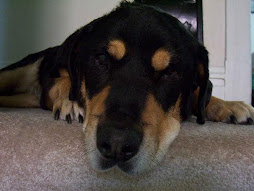
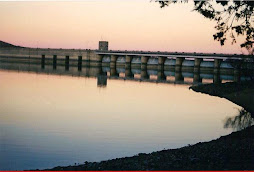







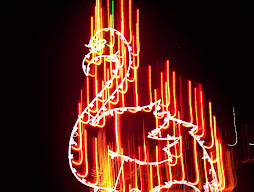






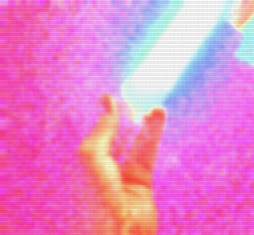











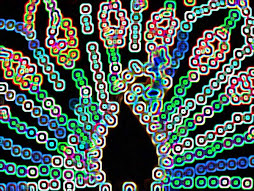























No comments:
Post a Comment